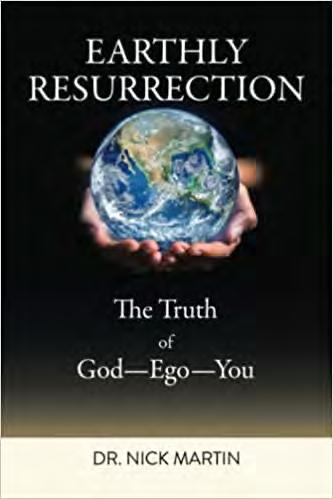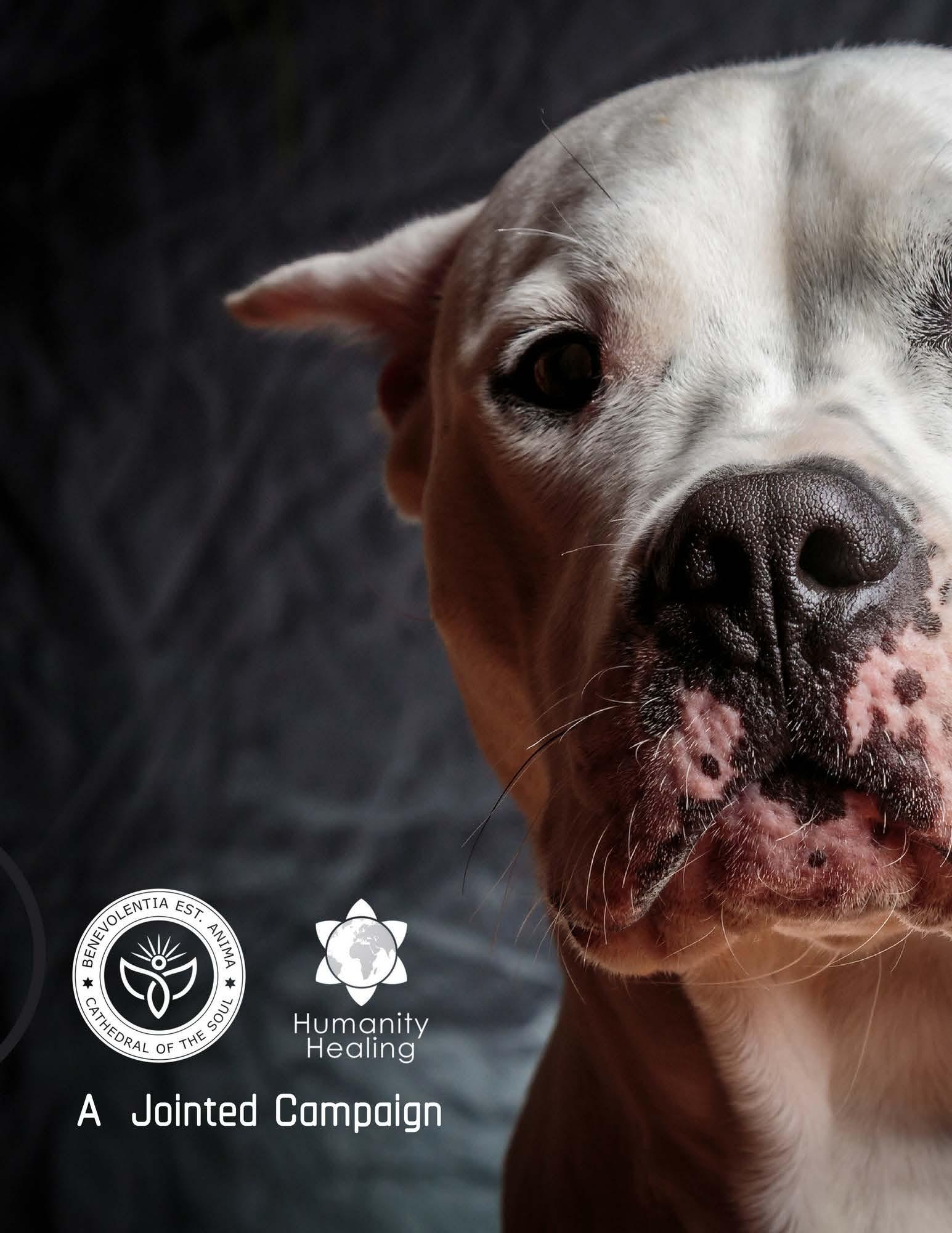







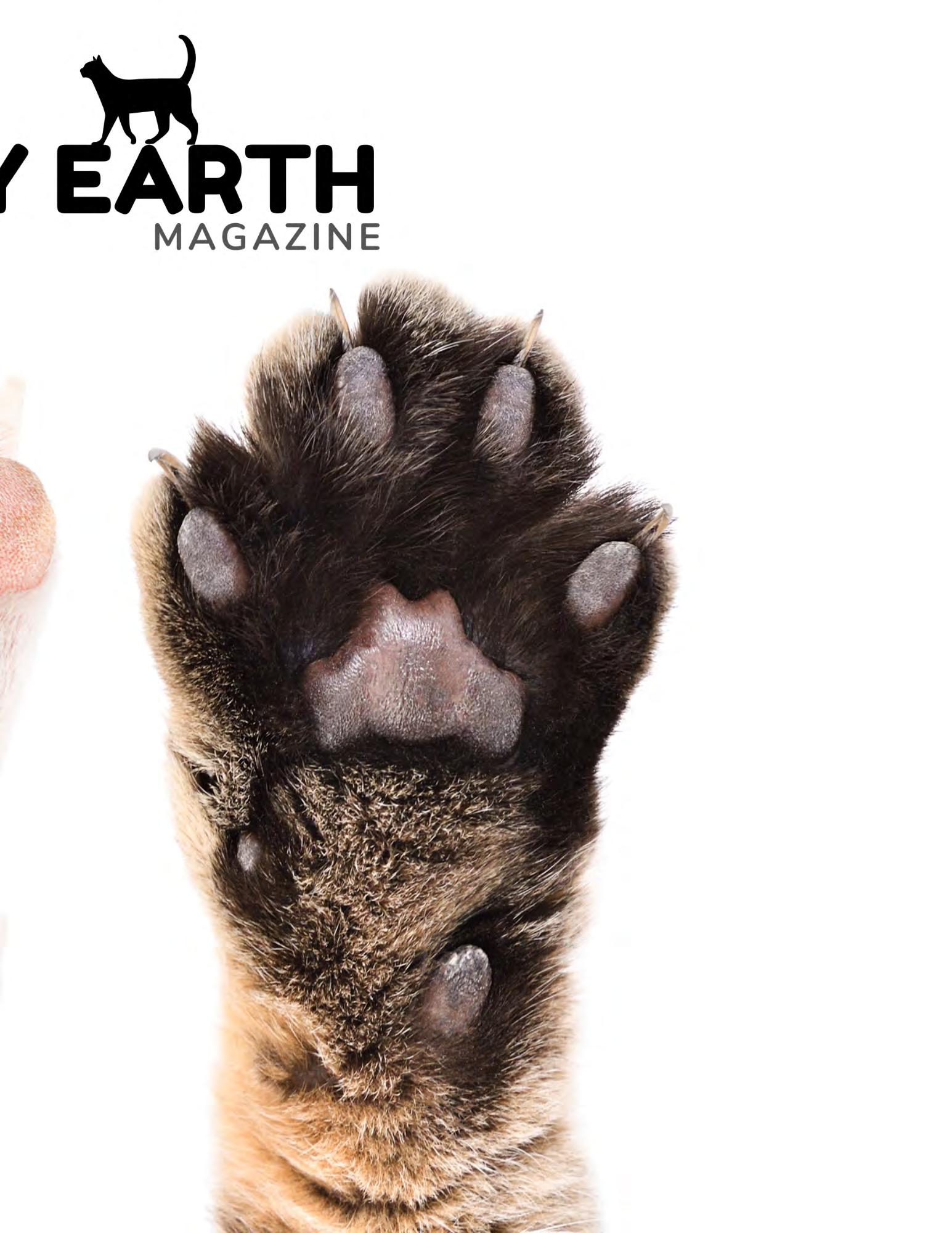




















































Throughout history, mankind has shown an inherent inclination toward seeking meaning, purpose, and a connection to something greater than oneself. This quest for spiritual fulfillment has shaped our beliefs, practices, and cultural expressions.

As we explore the depths of our existence and navigate the complexities of the modern world, the concept of spiritual evolution becomes an intriguing exploration of humanity's journey toward higher consciousness and expanded awareness.

The Renaissance, the Enlightenment, and other intellectual movements challenged traditional religiousdogmasandemphasizedreason,critical thinking,andpersonalexperience.
Finally, the New Age movement and the rise of EasternWesternphilosophiesbroughtarenewed interestinholisticspirituality,alternativehealing, andtheintegrationofmind,body,andspirit.
Thespiritualevolutionofmankindisanongoing journey that reflects our innate desire for transcendence,meaning,andconnection.
Itencompassesthewisdomofancienttraditions, thetransformativepowerofspiritualrevolutions, andtheintegrationofscienceandspirituality.As we navigate the complexities of the modern world,ourcollectivespiritualevolutionoffersthe potential for personal growth, social transformation, and a deepening understanding ofourplaceintheuniverse.
LeeHarris'Booksbringfreshairandnewperspectives to the understanding and development of the multidimensional human soul and its evolutionary dynamics.

So you have written a book and are looking for ways to place it before Conscious Readers. You are in the right place!

OMTimes readers ARE Conscious Readers.
A Book Spotlight in OMTimes Magazine and on the omtimes.com website creates impact. Not only is your book in front of a discerning, high-volume, targeted audience, but your OMTimes Book Spotlight will bring you up in the search engines.

Get more Bang for your Buck with OMTimes Social Media Marketing. To learn more, visit Spotlight Campaigns.





 By Sandie Sedgbeer
By Sandie Sedgbeer
When times are tough and everything we rely on is unraveling, we all need a trusted source of guidance and tools to help us navigate the turmoil.
Oneperson,thousandsofpeople,areturningtofor just that is globally acclaimed energy intuitive Channeler and musician Lee Harris, whose grounded practical teachings, popular monthly energy reports, and online courses have been helping thousands of conscious, intuitive, and sensitivepeopleworldwidetoheal,thrive,andlivea betterlife.
LeeHarrisjoinedSandietotalkabouthis latest book, Conversations with the Z's, which offers practical information from his guides about the energetics of this new human soul and how to awaken yourdimensionalsoul.

Sandie Sedgbeer: Lee Harris, you've been very busy with two books out quickly. How do you do it?
Lee Harris: Well, firstly, because they're not written books in the sense that I don't have to sit down and write––they're taken from audio conversations––which cuts down the time, and I just have to put the work into editing. I also felt that these books needed tocomeoutninemonthsapart.
Sandie Sedgbeer: You began channeling the Z's fairly quietly back in 1999, and now you are sharing their insights with millions worldwide. How do you feel about that? I mean, you've come suchalongway.
LeeHarris: Yeah, I feel better about it now. I still have moments when I might be having a really nice connection with Someone, and that comes into the conversation,
and I notice them freak out, stiffen, or not quiteknowwhattodowithit.Idon'tfindthat very convenient because the connection is whatweallenjoy,whatwecrave.


But I think I've come a long way in my personal development. Having to stand as a channeler has helped me with some of my programmings because I grew up like many in Britain with parents who instilled in our worry about what the neighbors think. So, that was screaming at me in the early years when I startedtodoitmorepublicly.
Andespeciallybecause,initially,Ijustfounda small group of people, and now, anybody can Google you and find out about you. It happened to me the other day in a meeting aboutamortgage.Theysaid:"Oh,I'velooked you up." But I kind of remind myself that none ofthisstuffshouldbeweirdtoanyofus.
We were just trained to believe that we are separate from Spirit. So, whenever my ego, mind, or programming comes up, I remind myself that we are all outgrowing this idea that we are divorced fromSpirit.

Sandie Sedgbeer: What's interesting is that I've watched you progress over the years, and you seem to be just like the people you are talking to in that you are learning and evolving as you go. And we get to see that, which we don't often get to see in Channelers.
Lee Harris: That'sinteresting.Irelatedtowhatyou said at the beginning, even though you pointed at me.I,likeeverybody,needthethingsthatkeepme afloat. Whether it's my connection to the Z's and my private relationship with them or friends, family members, or inspiring voices who keep me connected to the fact that we're in a very tricky time globally, and I think if you are sensitive or Someone who feels a lot, or who has always had a strongerconnectiontoSpiritthanmaybeweseeon a3Dlevel, itcanbeverychallengingtobehere. Iknowthatwasmystory.Soweirdly,Ifeellikethe jobIdonowisexactlywhatIneed.
And on some level, of course, it still serves my growth to do this job, but I'm really only doing something vital for my life. So if people say, "Oh, thank you, your energy updates really helped me," I'm just grateful because I can give something back.Forsomepeople,Iwillbeoneoftheirvoices. For others, they won't resonate with me. But that's not for us to decide. We just have to show up and dowhatwe'recompelledtodo.
Sandie Sedgbeer: The Z’s are a collection of 88 energies. Why 88? Is there any significance to that number?
Lee Harris: Well,it'sfunnybecause whentheyfirst told me that, I thought, oh, there were 88 keys on thepiano,andeightisaninfinitysymbol.Andmany things spoke to me about the eight, but they've explaineditintwodifferentways.
They've said that they are a balanced harmonic number as a group for reasons of the way they communicate with me and the vibration they communicatethroughmethatgoestoothersand helps them with their vibration. But what they've also explained is that they're not a fixed group. They are sometimes fixed as 88. So you could look at me and go, "Okay, that's Lee. He's one human being," but actually, I'm connected to all of these beings, and we're all connected to everybodyaroundus.Sotheysayweareagroup of 88, but we can also channel and speak to other energies, entities, and beings as we need to.
What I find interesting when we get into fixed numbersisthatI'veneverbeenthatinterestedin thefixeddefinition.~ButasIhavedonethisjob, I come across the human part of us in everybody around the world who wants the details, the answer. And I understand the need for those fixed details, but I just know for myself that the more I've learned, the less fixed everything is. It doesn't mean I'm always living in that place. I can be as human and small in myself if I'm going throughalessonasanyofus.Butitstillneedsto be fixed. And the more you break down those walls, as you know, getting into very hard and fastdetailscanbequiteproblematic.Becauseat somepoint,you'regoingtooutgrowthem.
SandieSedgbeer:Youpublishedtwovolumes back in 2012 and 2014 of "Energy Speaks ––ConversationswiththeZ's."Now,inthisnew series of books, you've done a completely different format and are working with psychotherapist and author Diana Edwards. Whatwastheinspirationforthatchange?
Lee Harris: Well, these were never supposed to be books. These were conversations many years ago. Diana is very strong in the area of grief and death as transformation and spiritual windows in our life. So, she asked me if she could interview the Z's about death and dying at some point. AndIsaid,sure.Andwejustkindofparkedit.
And then, sometime in 2021, I asked her if she would do some recordings with me for my members' community portal in a conversation format. Diana is so good at asking the kinds of questions I wouldn't think of, and we would do thisprivatelywhenwemetasfriends. So, when we started recording, I thought we'd do two conversations. But it went off like a rocket.
I think we had five conversations in two and a half days. And on day two, when I was in the little casita where I was staying while we were recording these in Santa Fe, I literally heard from above my head, "These can be books." AndIwaslike,really?AndIheard,"Yes. These can be books." So when the publisher said, "I'm not sure about the conversation format," I was quite determined and said, "Nope. That's what it needs to be." Because people need to be able to read this as if they areeavesdroppingonaconversation,and then when they have that conversation, they willhavetheirownepiphanies.
Sandie Sedgbeer: So, book one is on the energetics of the new human soul. What is theirperspectiveonthenewhumansoul?
Lee Harris: Well, it's interesting because Book One and Book Two are very much joined, and when I took the material to New World Library, they said they would like the first book to be just the first three conversations, which was much shorter than I imagined, but I understood theirlogic.
SobookoneisaboutTheEnergeticsoftheNew Human Soul, and book two is called "Awaken Your Multidimensionality." So really, those two sentencesarewhatwearebecoming.
We are becoming more multidimensional and moreconscious.Youcanseethiswhenyoulook atsomeoftheveryhumanaspectsoftheplanet right now. And I'm not talking about some of the levels of control and manipulation that we arebecomingmoreawareof.
Sandie Sedgbeer: The other thing which is sometimes happening so quietly and slowly that you don't often notice it is that people are suddenly talking about energy, who might not have done so four or five years ago.
Lee Harris: I love that because it's always about my random conversations in the street. People I don't know whom I meet and interact with on the tube or bus, in a taxi, or in a shop, and it's interesting how our way of speaking has changed. It's wildly different to 20 years ago. There are new levels of understanding that people have. There are words we should have been using then. For example, even with this idea of toxic relationships, I think only certain psychological or spiritual circles would speak about that a few decades ago. And now it's out there in the mainstream, and people have an understandingofit.Sothislovelyevolution is happening that, of course, is not dependent on one teacher, book, school, or religion. It's happening to us as a society. And we're all finding the different voices,teachings,andexperiencesthatwe each need to return to our awareness of Spirit.Andwe'veforgottenthat.Andthat's whywearedis-eased.
Sandie Sedgbeer: I think self-judgment has to be the epitome of what this age is all about. Everything that we've got access to, social media, et cetera, it's all about self-judgment. And we only have to look at the kids today to see what a problem that is causing. So I love what you said; people need to hear that.
Lee Harris: And you bringing that up just hits something in me. Yesterday, I was conversing with one of my loved ones, and they said they were quite nervous about saying something to Someone in their life because they were trying to let go of their own self-judgment about it before they toldthem.


AndbecauseIknewthatthepersontheywere talking about was quite judgmental, I said, "Well, you wouldn't even be feeling some of this if you were telling your other friend who isn't judgmental." It took me many years to understand that my self-judgment didn't originate with me. It was swallowed over time by many people whose energy of judgment wouldcomemyway.Andratherthanrebelling against it, I would say, " Oh, okay. I don't want to feel that judgment again, so I will become that judge myself to modify my behaviorsoIdon'tfeeldiscomfortagain.
So one of the things I'm very mindful of with myself, and I always run these checks, is that when I'm in a relationship issue with somebody, I do my due diligence on myself. Then I also look at them, and I'm like, "Oh, of course, you are feeling quite nervous to tell this person your truth because you historically seethispersongetvolatile,angry,defensive." So, yes, you can work on your own stuff but also know whom you're dealing with and how to do that appropriately. So I think that the myth of self is exactly that. We all have this inner life, but if we're honest with ourselves, our inner life is not just our soul life. It's our soullifepluswhomwe'vebecomeconcerning the society we've grown up in and our experiences.
Sandie Sedgbeer: Many people who wake up are now asking, "What do I need to do to go further and deeper? What must I do to develop and become my multidimensional self?" They're looking outside themselves for the answers. "Give mesomeexercise.Givemesomethingthat Ineedtodo;givemearecipe."

And that only sometimes helps. It's something that is growing from within them. When people come to you and say, "Okay, I'm here. Tell me what to do." What do you say to them?

Lee Harris: It's a good question. What you do come across doing this work is how much we want to be told what to do. How much we want the answer to soothe us. And in my experience, answers soothe or reset us temporarily. And that should be enough because there is no map. You and I don't know the map of our lives. We don't even know when we're going to die. So there's nothing wrong with chasing externals unless you ignore your internal because that's when people get unhappy. So they keep chasing an external, hoping it will give them some inner feeling.
My way of living is paying attention to the external dreams I want to create when they happen and noticing what does or doesn't happen to me inside. And with some of them, I'm like, I'm glad I did it or experienced that. And now, I've experienced it.


I don't need to experience it again. But other times, I will notice there is a shift in me that becomes permanent. For example, there are certain goals and dreams that we should be working toward because they are a manifestation of our growth, but they will be less meaningful than what happens to us as a result. So I'll give you a strange example; Someone once told me in a workshop years ago that they wanted to be an author and put their work into the world. And they said, "Oh my God, does it feel great just to have so many people who are grateful for your work?"
And I said, "I don't really think about it. I'm aware of it when I'm in a room like this because many of you appreciate it, and that's lovely. But I only see that as my job. Like I should be helping bring some value to your life, which you will then run with and that I know nothing else about. Nor is it my place to know. So I'm grateful I get to do this because I have been fed by what I call the wheel of creativity, and the wheel of spirituality that lives on our planet has helped me unlock more of myself, and I get to give back to it.
ButthepointImadetothemwaswhenIwasfirst putting work out into the world, whatever part of me craved or felt I was designed to offer things topeopledidgetfulfilled,andthenitwentaway equally.
I see a lot of people chasing adulation or duration, and I feel bad for them because if you are constantly trying to get approval or appreciation from others, there's a wound in operation in them that none of those people are ever going to help you get to the bottom of. Unless you pay attention and recognize that the wound is still there. So for me, that was an interesting experience. I was like, Oh, I do rememberthatitwasprettyextraordinarybackat the beginning. But then that moved on, and I hadn't thought about it for 15 years. I've just beendoingmywork,andI'vegrownwiththejob as the job has grown me. So I don't know if that helps, but that comes to me as an example of something we might be chasing outside. The bigger question is not Do we get it; do we transformwhenwegetit,moveon,andletitgo? Because that's what those outer goals are designedtobe.Unlessyou'rechasingthewrong thingsortryingtofixawoundthewrongway.
Sandie Sedgbeer: I want to get a little bit personal now. You started your career as a musician; it's your first love. And you did a cover of Kate Bush's "Running up That Hill," whichIthoughtwasaverybravemove.What madeyoudecidetodothat?
Lee Harris: So when Kate had this global moment with "Running up that Hill" on the TV show "Stranger Things," and they did this big orchestral version, I heard the lyrics differently, and I asked Davor, what if we took this back to intimacy and this whole division energy we've had in the world the last few years. So I heard it through that lens. And then, of course, I was terrified because, I mean, "Running up that Hill" isamasterpiece,andKate'samaster.
So when I was in the vocal booth, I was like, WhatamIdoing?Ilostmynervealittlebit,and then I pulled myself together, and we did it. Andwewerereallypleasedwiththeresults.We werehappyenoughtoputitout.Soyeah,that's howthathappened.
Sandie Sedgbeer: So, one last question. What advice do you offer for coping when things get really rocky? So many people are feelingthatrightnow.
Lee Harris: I think we're all asking that question, but one thing that comes back to me time and time again is that you will have the bestexperienceofthistimeifyoumakeyourself a priority in your life. That doesn't mean becoming selfish. That doesn't mean excluding people. But I think so many of us have never been called to find out what we need or to know who we are. And I think friends help with this. For example, I know I had a very strange view of myself for many years. I felt quite dysmorphic about my identity, and then friends would tell me: "Oh, well, you love to laugh. You are always the one." And I'd be like, Oh, am I okay? So they would tell me who I was, and from understanding who I was over the years, I thought, What are the things I need that help me feel like myself? Oh, I need laughter regularly at some level. I need music. Am I givingmyselfenoughofthosethings,especially in times of stress, especially if a big thing is happening to me, the people I love, or the planetasawhole?
So I think many of us wish that everything was just peaceful, but we know that's not going to be what happens right now. That won't be the state of the outer world right now. So the question is, how can you cultivate and protect thepeaceforyourselfinyourownlifeandfigure out how to start and employ it? You'll be amazedhowyourvibrationshiftswhenyouhave thatregularpractice.Anddon'tbeatyourselfup if you fall off the wagon. Just get back on again thenextweek.
SandieSedgbeer:Goodadvice. Lee Harris, thank you so much for joining us today. It's always a pleasure to speak with You.
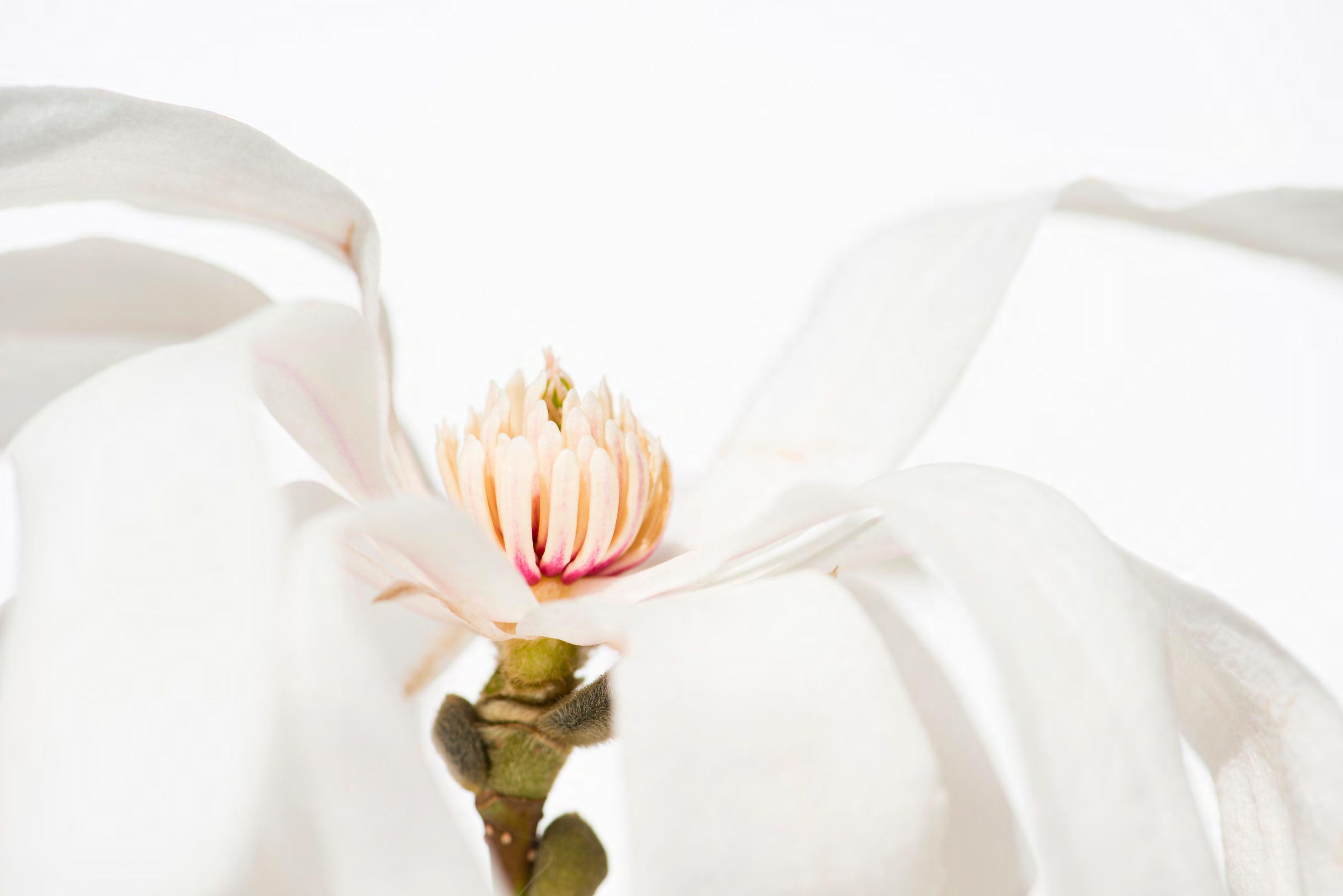
Conversations with the Z's Book One: The Energetics of the New Human Soul, and Book Two, Awakening Your Dimensional Self, which releases this month in the USA and on the 9th of June in the UK, are both published by New World Library. For more information about Lee Harris, his online events, books, music, impact the World podcast, and monthly energy reports, which are brilliant, visit his website, leeharrisenergy.com.










Donating your organs after death can save lives, but are religious taboos potentially limiting the number of organs available?

Someone who donates their organs after death has the potential to save
several lives as a result. However, in certain cultures, the idea of giving your organs away is viewed with a sense of profound unease because it’s a religious taboo.
This is the case among some African and Asian communities, for
example. One common objection is that organs must be retained after death in order for the deceased to successfully enter the afterlife. It’s a refrain that Gurch Randhawa at the University of Bedfordshire has heard before – though it’s not the only one.
“People in many religions wash the body, so they worry about what the body will look like,” he says. For example, he has found himself explaining that the deceased will be sensitively stitched back up after their organs have been retrieved.
And he has also heard from believers concerned that funerals and burials could be delayed – in some cultures, these often take place very quickly.
Randhawa was commissioned by the UK’s NHS to develop a Faith Engagement and Organ Donation Action Plan. It focuses on the need for engagement with faith-based communities at the local and national levels.
Randhawa says he works with leaders of all faiths in an effort to increase

donation rates. “There is a range of opinions regarding organ donation,” he adds, noting, for example, that some leaders may rely more strictly on religious texts – a challenging situation has given organ donation,

and transplantation are very modern medical procedures.
He points out that refusal to consent to donation for religious reasons is a particularly pronounced problem
among black and minority ethnic (BME) communities.
BME people make up around 30 percent of those on kidney transplant waiting lists, for example – and yet they constitute just 13 percent of the British population according to the 2011 census. In other words, they are more commonly in need of donor organs. But despite that clear need, the consent rate for organ donation among BME families is shockingly low – at just 35 percent compared to the white British average of 66 percent, says Randhawa. He adds that religious concerns often drive this low consent rate. This creates difficulties when trying to find compatible organs for BME transplant patients.
“Statistically speaking, you’re more likely to have a match… from someone of your own ethnic background,” he explains. That’s why the lack of BME donors creates such a problem for the BME community.
tricky. This is why Randhawa has pushed for faith leaders to have freedom when communicating this message: so that they can frame it sensitively for those who trust them. So, for example, a Muslim faith leader may pass on the fact that the UK’s Muslim Law (Shariah) Council ruled in the 1990s that followers of Islam could indeed donate organs.
“Faith leaders were very skeptical when we first started,” says Randhawa. But allowing religious leaders to pass the message on their own terms has been transformative.
“They find the fact that the government has been very flexible on this issue… quite empowering.”
Read our long read on why Spain leads the world in organ donation.
See this from the NHS and the US Department of Health & Human Services for more information regarding donation and religious beliefs.
For many religious communities, regardless of ethnicity, raising the subject of organ donation can be
The story was originally posted in Mosaic Science . Reposted using Creative Commons Attribution 4.0
International License


To perceive reality from a different perspective is to open oneself to the wonders and unlimited wealth of creation. Simply Spiritual offers the opportunity to visit new places, new methods, and different ways to perceive the vast human knowledge of our Universe.


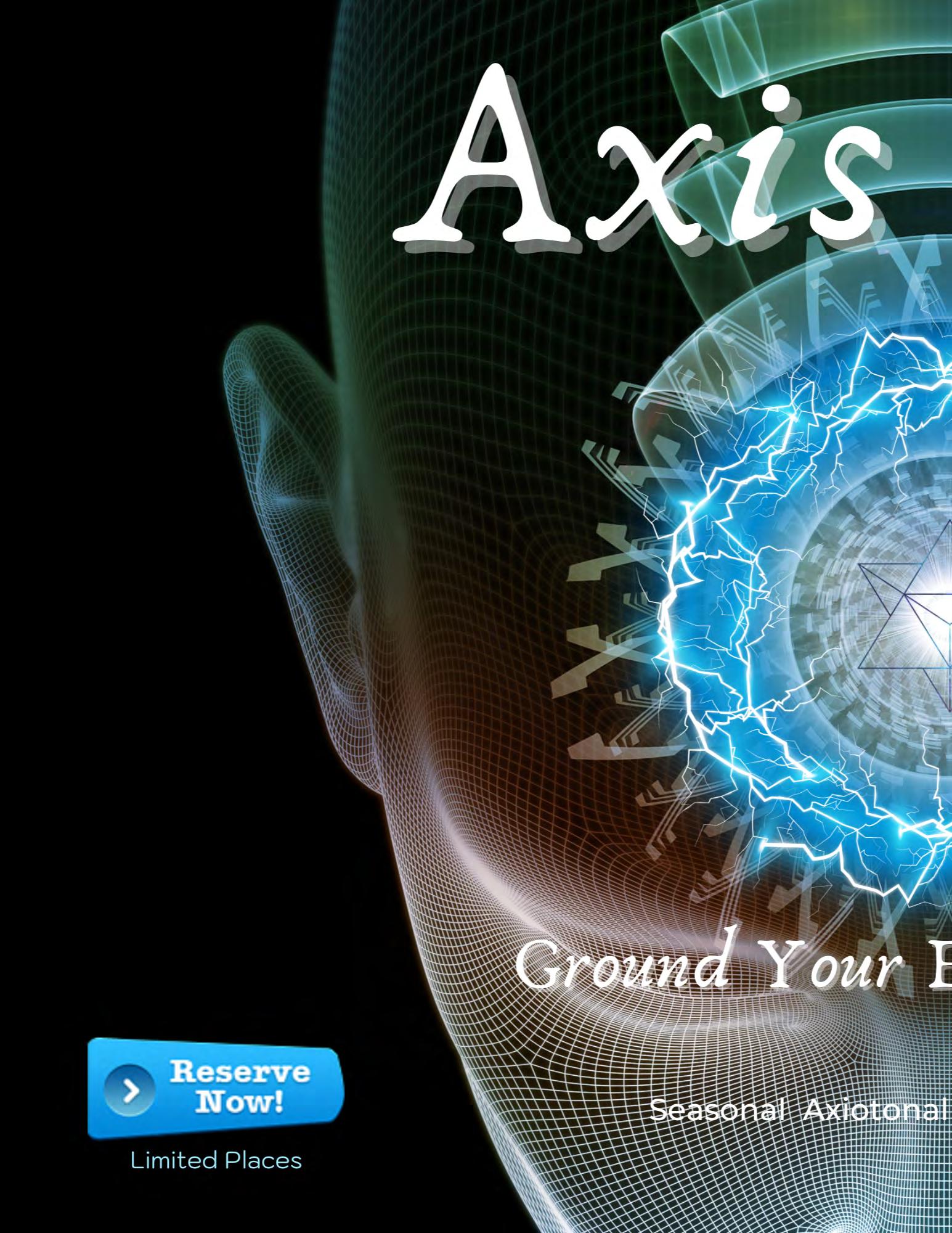

Many people have challenges with the concept of meditation and just exactly what it means. They want to understand how to attain that beautiful state of peaceful bliss. For those practicing advanced spirituality, meditation
helps them to strengthen the connection to their source energy. The guides, ascended masters and angels who help convey knowledge, insight and healing heed to this connection. While in a high vibrational state of meditation, you are completely able to control

the physical body with the spiritual body and be conscious of it; thereby training your mind to stay in this state while awake. Your body can be in a constant state of renewal and recharge if you are channeling in higher realms during meditation.
The first thing to realize is it is your state of mind and not your location that matter. Some people can meditate and connect in the middle of a crowded and noisy room. They
can also zoom in on people and situations going on before anyone else notices a thing. Others are too distracted by every noise and movement in the room to be able to maintain the focus they need.
Your own personal spirit guides surround you at all times with their vibrational energy. When you tap into this stream of spiritual light, their light becomes one within you, and combined with the energy from the

Source, it heals our every need. This is the energy of miracles. This amazing force calls upon the Angels. They can hear our prayers, answer our calls to be healed, and lifted up into the vibration of joy and absolute peace. This is the peace all of us long to feel as soon as we are born here. This is the spiritual consciousness that thrives in us and connects us all.
The light which radiated from us when we came here, that we think we might have lost sometimes, is only a prayer, a vision, or a thought away. The ability to call on the souls in the consciousness who love us fearlessly and
unconditionally is the super power of pure love which created us to which we will always return to.
As you become accustomed to the energy and the light your guides are bringing in with them, you will start discovering your own unique abilities to communicate. It takes courage and practice. There are many signs of awakening you can experience and build on to strengthen your bond with the souls who are there to assist you from the light. You may be able to feel a presence, a blast of air, a touch on your forehead or hear a bell ring. All of these signs are telling you that your meditations are successful.

Each of us may have our own ways of connecting in our prayers and meditations. There are no rules. If Spirit is coming through to you and healing your needs and comforting your fears, where and how you connect makes no difference.

Whether you are standing at the top of a mountain looking out at a beautiful valley or kneeling in a great cathedral, just know you are worthy of all the love you are receiving.
Judi Lynch lives near Huntsville, AL and works full time as a Psychic Medium, Spiritual Adviser, Healing Energy Channel, Author and Teacher. She is the
founder of the Crystal Healing Foundation, Inc., a 501(c)3 nonprofit charity dedicated to Healing through raising spiritual consciousness with psychic communication, energy healing, ascension awareness, crystals and meditation. Her first book "Friends with Lights, A True Story" is available on Amazon. Judi is also a Featured Columnist for OM Times Magazine.
To read more and contact for a reading/healing session or to schedule a workshop: www.judilynch.com
crystalhealingspiritualcenter.com


An infinite number of books are written about conscious parenting and attachment parenting. The two concepts seem different, but ultimately they say the same
thing: nurture your child by listening, observing, reacting, and interacting through your heart filled with Love and anchored in the here and now. Conscious / Attachment parenting (CAP), in its varying approaches, rests

upon the fundamental principle of respect and gentleness a parent must have towards his or her child from the first moment of contact.
Some would argue this initial contact occurs within the womb, way before the actual birth. According to Verena Schmidt and other authors such as Michel Odent, Willi Maurer, and others, a baby’s consciousness begins to exist the moment it is conceived. A mother can immediately attune herself to the vibrations of her child, thus always knowing what the baby is feeling or needing. Before the baby has a heart, ears, or functioning physiology, he or she is already consciously active and in alignment with the mother’s consciousness. Yet, once the baby is born, the dynamic unfolding of events over the first few months can shift the focus from the realm of consciousness – or energy –to the realm of the physical – or sleeping, nursing, pooping, and so on – leaving little time for the parents to stay tuned with the energetic dimension of child-rearing.
Rudolf Steiner teaches that children belong to the spiritual dimension much more than the earthly one until the age of 6. A parent practicing
CAP, therefore, must implement not only its practical aspects but also the spiritual ones.
It would be futile to engage in religion versus spirituality debate. Ultimately, there is only Love at the center of all religions and spiritual practices. As dissimilar as they may be in cultural backgrounds, origins, and rituals, they can all be studied for similarities or for differences. It is entirely up to the scholar. Or the parent. In the hands of CAP parents lies the power to raise strong, responsible, confident, good-hearted, and conscious adults. Therein lies also the power to open their child’s soul to the Truth of Godliness, Buddha-ness, Energy, or whichever term personally resonates most deeply.
After all, it has been scientifically demonstrated that the differences between spiritual and non-spiritual adults (usually defined by daily meditative practices) are significant. For example, spiritual adults tend to have lower stress levels (measurable by adrenaline and cortisol levels in the bloodstream); higher levels of the anti-aging hormone DHEA (dehydroepiandrosterone); higher
production of T-lymphocytes, B-lymphocytes, and natural killer cells (NK) fostering a stronger immune system; higher natural production of endorphins and serotonin; and much more. Therefore, the benefits of leading a spiritually enriching life are not purely idealistic. Nevertheless, there is a strong scientific foundation that should motivate CAP parents to invest time and resources in raising spiritually awake children.
How can spirituality be fostered in babies and young children? There is

so much to do already. Parents can do an array of simple yet powerful things that will stir their awakening, empowering them to help their babies recognize, stay connected, and grow within their already existing spiritual nature.
Practice: Consider starting a daily practice of any form of prayer, meditation, or chanting if you are not already doing so. As Lee Lozowisk repeats throughout his book Conscious Parenting, you will not be able to teach your child something you cannot do or do not
believe in yourself. Instead, practice will expand your consciousness to all that is spiritual inside and around you, awakening to the inner and outer presence of the Divine (do not be lost in definitions or labels, go to the Truth). Each individual is but a fragment of the Divine. Once connected, there will be no boundaries between yourself and others, just like there aren’t in children.
Parlance: Keep the Truth in your heart and learn to articulate it. A child is not traumatized by the Truth but

by the incapacity of a parent to communicate it with Love and Light. Sync with your inner Truth and learn to convey it through evocative and loving imagery.
Passage of Life: Death is a glorious homecoming; this life is but a passage, a transition. Children know this much better than most adults. There is no need to shield them from death. It would be preferable for the parents to undertake their own transformative work about death and dying so that they may live the transition as peacefully as a child.
Presences: Believe your child when he or she tells you they are seeing an angel, fairy, or person in the house. Chances are you are stuck in Maya, whereas they are still vibrating at a higher frequency, able to read auras and recognize and interact with any entity around. Encourage them
to tell you about the experience while reassuring them if there is any confusion or apprehension. Be mindful not to contaminate their experience with your confusion and worry. Children have the gift of sight; you are blessed to become part of it through them.

Paradise of life forms: When you walk past a plant, stop to smell it, touch it, or talk to it. Tell your baby to do the same and send the plant love and light so it may grow strong. Similarly, when you come across a cat, dog, mouse, ant, or any other living animal or insect, stop to observe its liveliness and vibrations and create a space to exist with such precious life for a moment. Invite the baby to do the same by observing first and gradually inviting him or her to interact. This may be a little challenging with toddlers whose idea of gentle interaction is squishing and destroying. However, repetition, albeit tiring, works wonders. Leading by example is fundamental, given that they function in imitation mode until the age of 6 or so.
Principles: Ultimately, your daily life will be an example of selected universal principles, acted upon each day, reminding yourself and your child that you are living a life of awakening. Centeredness, nonviolence, responsibility, honesty, Love, and forgiveness become the cornerstones of your teachings, regardless of the religious nomenclatures.
Persistence: As your child ventures into the external world, his or her spiritual awareness may be tested and misunderstood. This moment can be a wonderful opportunity to explore the reality of opposites. Each diverse opinion or person is a springing board for further centering and growth.
As Neale Donald Walsh regularly reminds the reader in the Conversations with God trilogy, each of us is here of our own volition with the sole objective of remembering who we truly are. Once we manage to remember that we are living fragments of the Divine, it becomes our mission to live a life as intended by our soul and not our minds or, even worse, by society. While it is true that there is nothing simple or easy about raising a child consciously and spiritually, it can be an enormous amount of fun. The secret, in fact, to spiritual -parenting and -living is to keep it fun, to stay light-hearted, to tap into your inner child, and to reconnect with the magical world of angels and fairies and impossible possibilities.


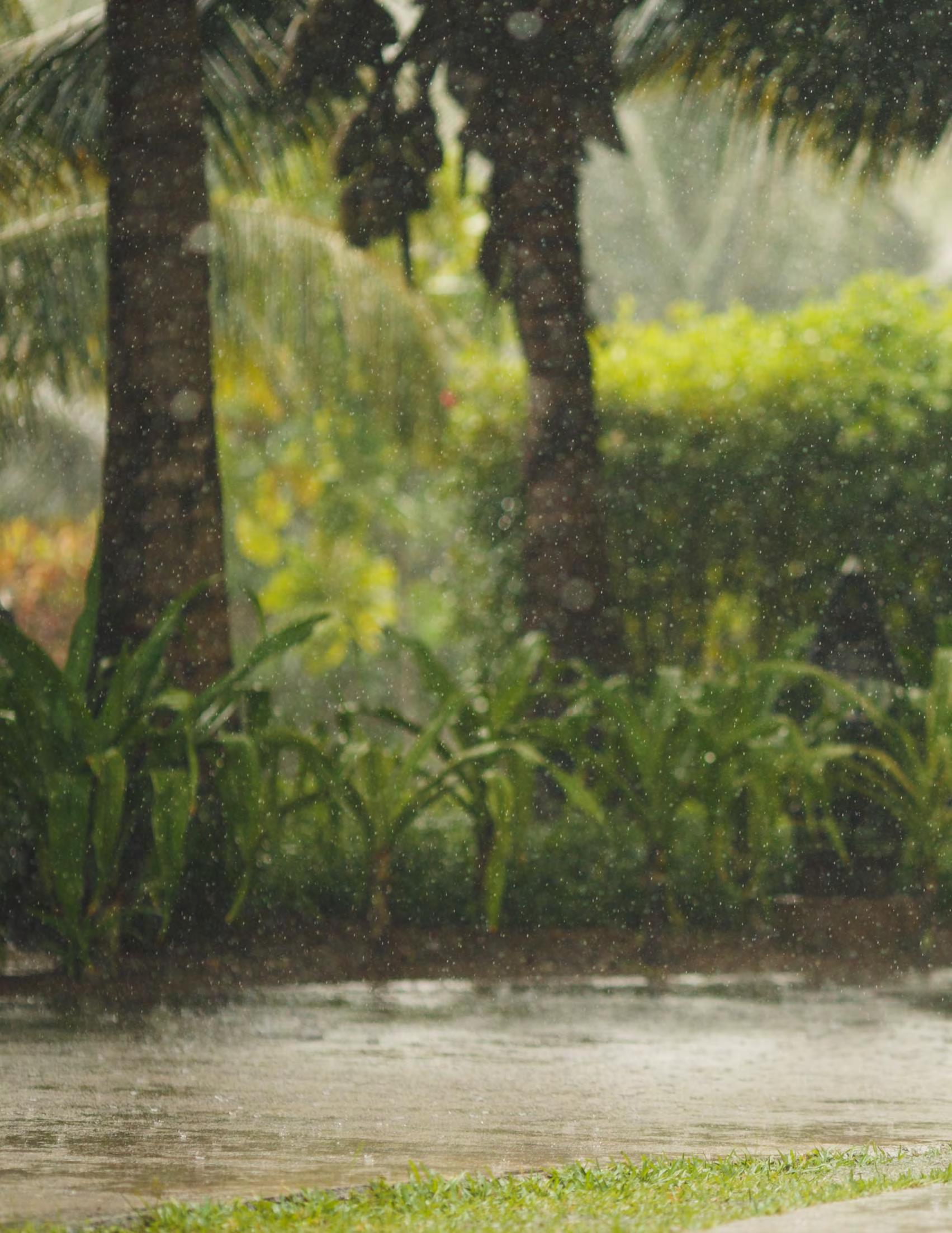

Globally, 2020 was crucible for many people—and for many reasons. For those of us who were fortunate enough to keep our health, we still faced enormous upheaval as we moved our lives indoors and
hunkered down. A home that had served as little more than a changing room before the pandemic suddenly became a person’s entire world. In my role as a professional organizer and declutterer, I saw my clients in Los Angeles and across the country

have a reckoning with their home environments unlike anything we have ever experienced in our lifetime.
Whenever I had the occasion to get in my car and quickly zip across Los Angeles during lockdown, I couldn’t help but notice that most of the vehicles on the street were UPS, DHL, FedEx, and Amazon. So many Amazon trucks. So many, in fact, that I started to notice that unmarked vans had slapped on Amazon magnets and drivers in orange vests were popping out of them with armloads of packages. Then I started to notice the piles of packages on doorsteps. Piles. Every front stoop looked like a Leaning Tower of Packages. Blue recycle bins were barfing out empty cardboard boxes. When I finally started to work in clients’ homes again, I was shocked at the amount of shopping they had done. It looked as if they had rebought everything they had decluttered before—and then some.
awakening. Previously, they could hunt down their keys, or their “good” blouse, or the “right” travel mug, and eventually get out the door. They could promise themselves once again that they would deal with their clutter “soon.” But during the pandemic, they had nothing to do but accept that their homes had become unmanageable. Just like overeating or drinking too much, over shopping is fun in the moment but there is always a heavy price to pay later.
For many people, having to be stuck at home confronting their disorder, disarray, and excess, was a rough
I thought business for dClutterfly1 would be slow as lockdown restrictions lifted. Instead, I ended up hiring more employees to help me get my clients’ clutter under control so that bedrooms, garages, and kitchen counters could become offices, so that children could go to school from home, and so that families who used to sit down for a meal once a week could now eat three meals a day together and work alongside one another with minimal friction. And that’s not to mention helping all the people moving. Aging parents moving in with their adult children to stay safe and help with the grandkids. Grown adults moving back in with their parents due to the
economic downturn. People deciding it was time to get out of the city and move somewhere quieter. Everyone trying to make big shifts happen quickly was confronted with how much stuff they had and how little they needed.
In some instances, we emptied garages of broken lawn mowers and unused furniture. There was gently used baby gear to pass along. We
helped consolidate closets so that one could be converted to an office.
We packed up China from credenzas and replaced it with school supplies.
But primarily, what people called us for was to deal with the overwhelming excess. The hallway lined with boxes. The closet filled with untouched shopping bags. The kitchen drawers bursting with multiple unused gadgets. The den was filled with dusty exercise equipment.

Look, we all need things. I own many, many things. I have things I cook with, things I bathe with, things I wear, and things I work with. I even have things I just like to look at because they make me happy.
But when we have excessive amounts—more than our homes can hold, more than we can clean and care for, more than we can ever use—we need to reflect. After being home twenty-four hours a
day for months on end, we have to ask ourselves how much do we really use? How much stuff do we really need?

Let’s agree that if we weren’t dusting off the treadmill during the pandemic, we are never going to.
Despite everything advertisers want us to believe, stuff does not make us healthy or better or more successful. It doesn’t give us longevity, and it certainly doesn’t help the planet.
Most importantly, it is scientifically proven that stuff does not make us happy.
And your happiness is what I care about.
Tracy McCubbin is an entrepreneur, CEO, and the author of Making Space, Clutter Free: The Last Book on Decluttering You'll Ever Need
(June 4th, 2019) and the newly launched book, Make.
Space for Happiness: How to Stop Attracting Clutter and Start Magnetizing the Life You Want (Sourcebooks, October 4th, 2022).
She has always referred to herself as "Obsessive Compulsive Delightful," but who knew she could turn that trait into a booming business? While working for a prominent television

director in Los Angeles, Tracy discovered she could see through any mess and clearly envision a clutter-free space. Coupled with keen time-management and organizational skills, Tracy soon found more and more people were asking her for help. Before she knew it, dClutterfly was born.

I grew up in California, the daughter of a wonderful man
with an intractable hoarding problem, so I saw firsthand the tenacious pull that stuff can have on our psyches. As an adult in Los Angeles, I became a personal assistant known for being able to tackle any organizational challenge. As word spread, my business was born, and dClutterfly is now Los Angeles’s premier home organization company.


 By William Bezanson
By William Bezanson
Scientists regularly study the ongoing degradation of Earth’s environment and track the changes wrought
by a warming planet. Economists warn that intensifying disasters are harming people’s quality of life. And policymakers focus on crafting
rules to diminish the health and environmental effects of humanity’s growing footprint.
What is the role of philosophers and people of faith in this bigger discussion about the environment and sustainability?
Rita D. Sherma is co-chair of a research initiative aimed at bringing the beliefs of religion, spirituality, and ethics to the study of sustainability.
Here she explains the core ideas behind “green spirituality,” how religion and environmental protection are closely intertwined, and the role faith can play in restoring hope amid the drumbeat of discouraging environmental news.
Green spirituality is an orientation to the divine, or supreme reality, that is grounded in our experience of life on planet Earth. It respects the miracle of life on this planet and recognizes our relationship with it.
oriented toward the Earth and its ecosystems for those outside of organized religion. It encourages a contemplative and harmonious relationship with the Earth. Green spirituality seeks to harness the world's spiritual traditions to energize the effort to restore planetary ecosystems and stop future harm.
Why do spiritual and religious teachings belong as part of the global conversation on the environment?
First, 80% of the world’s population practices an established religion or a spiritual tradition that offers community, support, and resources for resilience.
Second, as I have written in my new book on religion and sustainability, better technology will help human communities restore ecosystems.
Such a spirituality can have God or the divine as the focus or be
More and better data, such as computations to forecast disasters, will also be helpful. But both are inadequate in the face of human denial and recalcitrance.
In my book, I write: “Planetary survival is now predicated upon the alignment of our notions of both human and ecological rights with our highest principles.
As such, ways of knowing embedded in religion, philosophy, spiritual ethics, moral se traditions, and a culture that values the community and the commons – an essential resource for the transformation necessary for environmental regeneration and renewal – are indispensable.”
In other words, people on Earth need to tap into the ways
of thinking from these faith traditions to address the current environmental crises.
Can faith and religion help counter rising eco-anxiety?

Catastrophic wildfires across the planet, extreme weather patterns that destroy homes and histories, degraded soil, toxic air, unsafe water and the desecrated beauty of places we have loved are causing climate trauma and eco-anxiety.
For those who are acutely aware of the cliff edge on which we
stand as a species and as a planetary community, the despair evoked by the magnitude of the disaster is almost unbearable.
Religions, faiths, and spiritual practices can help in unique ways. In this space, people can find community, peaceful practices of meditation and prayer, embodied sacred actions that include rituals and liturgies, and a ‘long view’ informed by the tragedies and triumphs faced by spiritual ancestors.
Faith can provide hope and resilience in the midst of crises.

How do different faith traditions treat respect for nature?
Religions may disagree on many things, but each contains philosophical or theological orientations that can be interpreted and applied in ways that protect the Earth.
Some traditions, such as Hindu, Yogic, Indigenous, and others, see the self as a microcosm of macrocosm or a part of the greater whole. And profoundly sacred immanence, or integral divine presence, is woven through their philosophies.
For these spiritual traditions, religious practice integrates trees, flowers, sacred groves, sanctified terrains, rivers, mountains, and elements of the entire ecosphere into liturgical and personal practice.
Christian Eco theology focuses on stewardship and the ethics of Earth justice. A well-known Muslim Eco theologian speaks of the Earth as a mosque in reference to the prophet's saying (hadith) –which renders the entire Earth as sacrosanct. Jewish ecological thinkers have envisaged the idea of “Shomrei Adamah

“The good man is the friend of all living things.” — Gandhi
Keepers of the Earth, which connects humanity and the Earth through divine love.
Buddhism’s spiritual aim is the absolute awareness of interconnectedness and mutual causality.
Ahimsa or noninjury to living beings and the Earth, is the highest doctrinal principle in Hinduism and Buddhism, and it is intensely followed in Jainism.
How are organized religions putting environmental protection into practice?
Many initiatives and conversations are happening among religions, and among interreligious leadership and international bodies – most importantly, the United Nations initiatives.
Some important conversations include the Interfaith Rainforest Initiative which brings the dedication, impact, and moral authority of different faiths to restore the world’s rainforests and

help empower the Indigenous peoples who view themselves as their protectors.
Greenfaith is a global, multireligious climate and environmental movement. I also serve on the advisory board of the Yale Forum on Religion and Ecology pioneering international interreligious project at Yale University started by scholars Mary Evelyn Tucker and John Grim that ignited the academic field of religion and ecology as a global engaged force for the greening of religion.

In 1985, the World Wildlife Fund established the U.K.- based Alliance of Religion and Conservation for developing partnerships with religious groups for collaborating on environmental protection.
WWF’s [Sacred Earth: Faiths for Conservation program collaborates with faith groups and religious communities who are committed to the view that the Earth is a sacred charge that demands the commitment of our care.

In November 2017, the U.N. “Environment Program,” realizing the significance of religious communities as key actors, founded the Faith for Earth Initiative to engage with faith-based organizations as partners, at all levels, toward achieving sustainable development goals and realizing the 2030 agenda. The initiative affirms that “Spiritual values drive individual behaviors for more than 80 percent of people.
In the fall of 2020, the Parliament of the World’s Religions and the U.N. Environment Programme jointly published a book titled “Faith for Earth – A Call for Action,
which provides an overview of the diversity of religious principles and practices that support action for the protection of the Earth.
Rita D. Sherma is affiliated with Yale Forum on Religion and Ecology. John Grim, Ph.D., and Mary Evelyn Tucker, Ph.D. has presented lectures at events convened by Rita D. Sherma.



The Ethical trend in fashion is a movement within the fashion industry that aims to create clothing and accessories made in an environmentally sustainable, socially responsible, and ethical way. It seeks to minimize the fashion industry's negative impact on people, animals, and the environment while promoting fair labor practices, animal welfare, and responsible production methods.
“Ethical fashion is the recognition that there are human beings behind the clothes that we wear”.
Sustainable sourcing: using ecofriendly materials, reducing waste, and minimizing the carbon footprint of production.
Fair labor practices: ensuring that workers involved in the production process are paid fair wages, work in safe conditions and are not exploited.
Social responsibility: promoting equality and respect for human rights and ensuring that the fashion industry does not contribute to human exploitation or environmental degradation.
Transparency: providing consumers with information about the materials, production methods, and working conditions involved in making their clothes.
Ethical fashion is often contrasted with "fast fashion," characterized by high-volume production, low prices, and a lack of transparency and accountability. The ethical fashion movement seeks to create an alternative to this model by promoting sustainable, responsible, and socially conscious fashion practices.
Animal welfare: avoiding the use of animal products and ensuring that any animal products used are ethically sourced and produced.
Despite all the potential good that a more conscious approach to clothing can bring to our environment and our world, there are many things that still suck about it, we listed some of these things.
Limited availability and high cost: Ethical fashion tends to be more expensive than fast fashion, making it inaccessible to many consumers. In addition, ethical fashion brands are often smaller. Their limited availability makes it difficult to find the styles and sizes that customers want.
Lack of variety: Ethical fashion brands often have a limited selection
of styles and designs, making it difficult for consumers to find clothes that suit their tastes.
Slow production and delivery times: Ethical fashion brands typically prioritize sustainable production methods, which can result in longer production and delivery times. This can frustrate customers who are used to fast and convenient shopping experiences.

Limited size inclusivity: Many ethical fashion brands have a limited range of sizes, which can be exclusionary to customers who do not fit within their size range.
Inconsistent quality: Some customers have reported that ethical fashion brands sometimes meet different standards of quality than fast fashion brands. This can be particularly frustrating for
customers who have invested in more expensive ethical clothing pieces.
Greenwashing: Some companies claim to be ethical or sustainable without actually making meaningful changes to their production processes. This can mislead customers and undermine the efforts of genuinely ethical fashion brands.


We must say that nowadays many ethical fashion brands are working to address these issues and provide high-quality, accessible, and sustainable fashion options.
“As consumers, we have so much power to change the world by just being careful in what we buy”
Emma Watson
“Fashion can be a universal player in protecting the planet” —Pharrell Williams- Musician and entrepreneur (National Geographic 2014)
“Clothes are not going to change the world, the women who wear them will”
Anne Klein- Fashion designer.
“There is no beauty in the finest cloth if it makes hunger and unhappiness”
Mahatma Gandhi.
“Become an active citizen through your wardrobe”. —Livia Firth- Founder and Creative Director of Eco-Age.
“As a designer, I like to work with fabrics that do not bleed. That is why I avoid all animal skins”.
Stella McCartney- Fashion designer (Elle 2012).
“No one wants to wear clothes that were made from someone’s blood” —Amber Valetta- Model and entrepreneur (Vogue 2015).
“Ethical should be the new normal”.
“Call it eco-fashion if you like, I think it is just common sense”—Livia Firth.
“Sustainability is about the long run”.
“There is no such thing as “away”. When we throw anything away it must go somewhere”
Annie Leonard.
“Sustainable Fashion is not a trend but the future”
Antonia Böhlke.
“We only have two choices: do nothing or do something”
Tony Kirwan.
” Fashion shouldn’t cost the earth”— Environmental Audit Company.
“We can´t just consume our way to a more sustainable world”— Ecowarriorprincess.
The interconnectedness among all human beings and, consequently, the relationships among us are the focus of this section. The dynamics of the web of connections we make is one of the most prominent aspects of human existence: how we interlace with each other’s existence in a meaningful way.


 by Marni Battista
by Marni Battista
Every relationship comes with its own intricate obstacles, and an interracial or interfaith relationship can have its challenges.
Partnering with someone of a different ethnic or religious background can make even the most spectacular relationship a bit more complicated. Even though
relationships of every imaginable combination are increasingly common in the modern-day dating scene, the concept hasn't completely shed the stigma yet—and many otherwise solid and healthy relationships suffer because of it.
To help those currently weathering the challenges of being in an interracial or interfaith relationship, here is simple Dating with Dignity rules to navigate these complicated waters toward happiness and harmony.

Investing time in learning more about your significant other's background and beliefs will not only express how much you care, but it can often bring the two of you closer together.
Respect each other's cultures and beliefs: It's important to be open and accepting of your partner's
cultural and religious background. Try to learn and understand each other's values, customs, and traditions. For example, if you're far along enough in the interracial or interfaith relationship and your partner is comfortable with it, reach out to their family for a greater understanding and maybe even attend a religious service with them.
Beyond the invaluable bond, such a gesture will create a clear understanding of any major differences in cultural background
or values that may have caused rifts between you two otherwise.
Don't forget to respect each other's boundaries: It's important to respect your partner's boundaries and not pressure them to compromise their values or beliefs.
Educate yourself: Learn about the history, struggles, and triumphs of your partner's culture and religion. This can help you understand their perspective and build a stronger connection.

Communicate openly and honestly: Communication is key in any relationship, but it's especially important when dating someone from a different background. Be honest and open about your thoughts, feelings, and concerns.

Try to block out the unsolicited opinions and warnings from disapproving family members and friends early on while remembering that many of them
are steeped in certain attitudes and prejudices that make your significant other's belief system or background seem unwelcome.
Once your interracial or interfaith relationship starts feeling like the real deal, communicate what you've learned about your partner's culture to the loved ones who bristled initially, and make sure he does the same. Of course, this isn't always the case; but often, the more knowledge you can impart, the less foreign and more welcome your diverse

backgrounds will appear to each other's families.
In some extreme cases where loved ones use racial slurs to refer to your man, gently explain to them why those derogatory marks are unwarranted and extreme. Your tender thoughtfulness to learning and explaining these differences to your family will further show them how much this person means to you and send their approval rating through the roof.
Focus on your relationship: While cultural and religious differences may be an important aspect of your relationship, it's also important to focus on your connection with your partner as an individual.
Don't let stereotypes or assumptions get in the way of building a strong relationship.
While disapproval from those you love most may be the most noticeable, silent judgment and/or even verbal taunting from total strangers can be just as piercing. Rather than springing into action whenever someone makes
an unwelcome comment about your coupling, keep moving and adopt the mantra that the more vicious their comments, the more ignorant and insecure the attacker. To ensure any offended feelings don't build up and have a ripple effect on your relationship, be open with your partner about how the comments make you feel; if anyone else can relate, it's him!
Be prepared for challenges: Interracial or interfaith dating can present unique challenges, such as navigating different family expectations or dealing with discrimination. Be prepared to face these challenges together and support each other through them.
Marni Battista has a Master's in Education and is a Certified Life Coach by the International Coaching Federation. Marni is also trained as a facilitator and mentor trainer. She is the on-camera Dating & Relationship Coach to Tristan Couveras, star of the new hit reality TV show, "Control TV," produced by Seth Green and Ken Fuchs, producer of "The Bachelor." Find out more about her workshops and classes at: datingwithdignity.com.


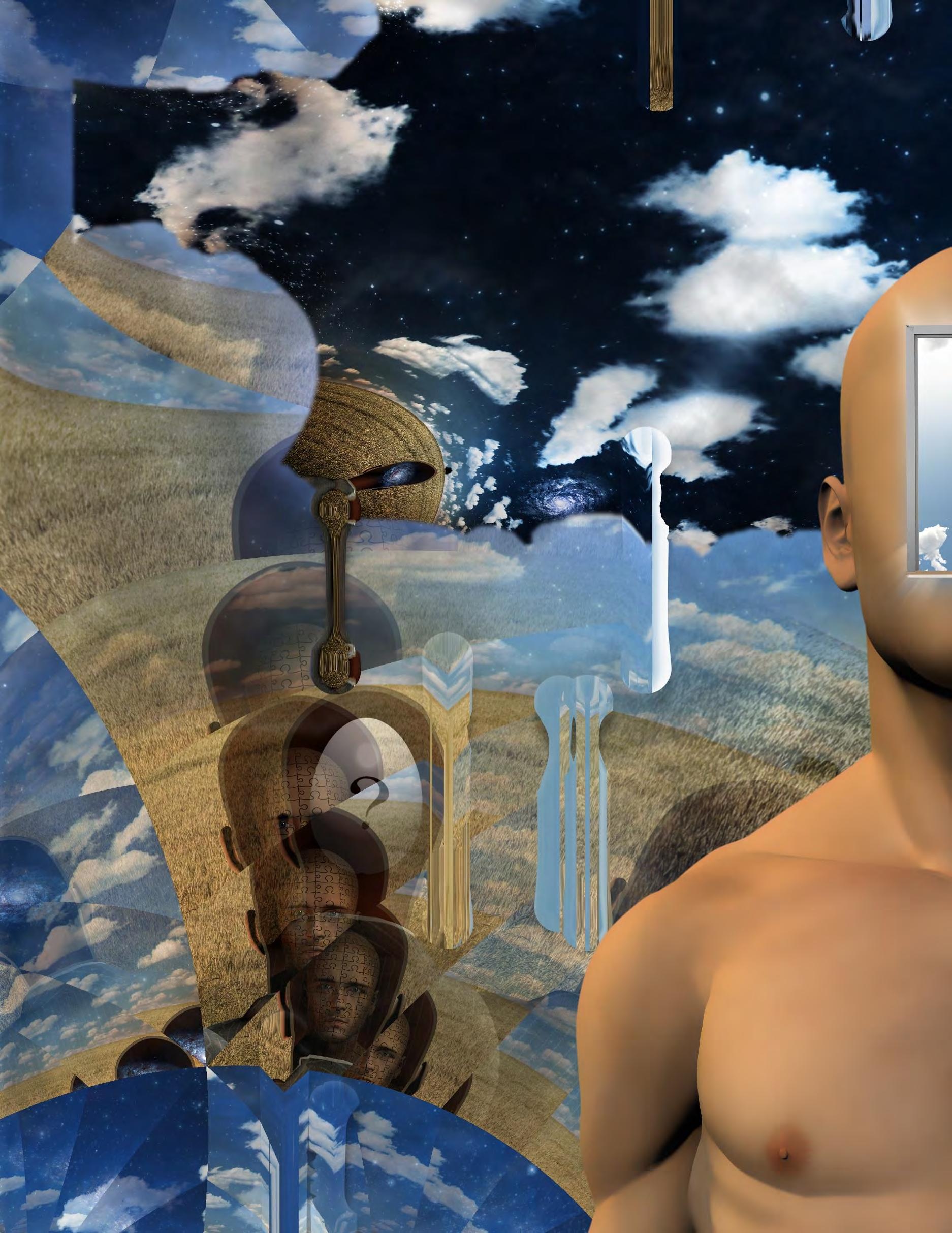



The cosmos is within us. We are made of star stuff.
 — Carl Sagan
— Carl Sagan
All things that exist in the universe are deeply related and are all made of the
same essence and structure. In fact, everything is "one thing," and the diversity of life, the laws of physics, and everything that exists work in symbiosis, like a perfect orchestra where each one has its specific role that forms the whole.
How does one affect others? As the other science and astronomy go, we realize that everything has the same origin, formation, and a primordial connection to existence.
We are made of star stuff. Our bodies are made of star stuff. There are pieces of star within us all.
— Carl SaganThis interconnection between everything that exists is, in itself, proof against chance. It is extraordinary to see how from the smallest organism to large animals and nature itself have a connection, which throws a spiritual prism on human existence that affects even science. It is increasingly difficult to support chance as a cause, which does not mean that science can assume some religiosity as a guide in producing knowledge about reality. But the fact is that, especially with advances in understanding the quantum universe, materialism faces more difficulties and is no longer unanimous among scientists.
incredible diversity. We are literally stardust, and we have the entire universe within us.
1. "WE ARE ALL STARDUST": WE ARE THE COLLECTIVE, THE CONNECTION BETWEEN ALL. NOTHING EXISTS ALONE."
Despite scientific skepticism and its refusal to consider the spiritual universe as true, some facts support the metaphysical perception of life and show that under no circumstances could chance be capable of producing such diversity and interconnection between everything that exists. The perfect connection between everything and the purpose with which the nature of life is designed is the heart of the metaphysical dimension that we observe in nature.
Everything that exists is, in fact, only one, a whole divided into parts, a great organism that expresses life in the most varied ways and with
This does not mean claiming any belief as true since religion is often far from the divine reality. Not because they are religions, that is, ways of explaining life on Earth through the prism of faith, but because they have become tools of manipulation and power, which refuse to accept human nature and evolve as scientific discoveries
advance. It is unnecessary to believe in Adam and Eve to think of life as a divine phenomenon and to get the existence of the soul and the spiritual world.
This does not mean it is impossible to extract from religions a lot of knowledge and learn about God.
Astronomer Carl Sagan's most famous quote says much about us
and our reality. When we say that we are stardust, it means that all the elements that form human beings, plants, rocks, planets, and everything else that exists were formed billions of years ago, in the same event, during the explosion of stars. Light years away from Earth. Therefore, all these elements have the same structural constitution, and everything has the same origin. To better exemplify, we can use iron and gold: these elements can only be synthesized in nature under extreme temperature and pressure conditions – that is, when a star dies and explodes violently, becoming

"In nature, nothing is created, nothing is lost, everything is transformed."
— Antoine Lavoisier
a supernova. And those same explosions generated life.
And this conclusion is not esoteric: after analyzing 1,500 stars, astronomers concluded that both human beings and bright stars have 97% of the same type of atoms. So, we and the stars are exactly the same things.

All were cooked in the fiery hearts of long-vanished stars. … The cosmos is also within us. We're made of star stuff. We are a way for the cosmos to know itself.
— Neil deGrasse TysonLavoisier's phrase states that "nothing is lost, and everything is transformed" and also contains an astonishing assertiveness. Everything that exists on Earth remains on Earth; the matter that exists here does not naturally escape into outer space. So the planet's atoms have been here since the beginning, circulating over time. Everything that is something today was something else in the past. Isn't it amazing to think that the matter that makes up our bodies was once part of other organisms? Even
considering that we were once part of other human beings is plausible. And this vision has no interference in the certainty that we are spirits, consciousnesses living an experience in the matter, as we speak of the physical constitution that forms our bodies. Though also connected, matter and spirit are separate entities.
We are star stuff that has taken its destiny into its own hands.
 — Carl Sagan
— Carl Sagan
Look at the relationship we have with trees and how essential they are to our existence. They synthesize carbon dioxide and eliminate oxygen, a primordial element for human life. Without oxygen, we die in a matter of minutes. And we can go further: studies show that there is a "communication" network in forests between species. When
there is danger, the animals seem to communicate and pass the warning to each other, alerting everyone to the existence of a threat. Everything in nature works with connection and bonding, much more than we are used to thinking.
Some studies indicate that trees, for example, have a communication system underground. They communicate and, through this communication, organize themselves. For example, when 4,343 / 5,000, there is a sick or weakened tree, and rationing of nutrients was observed to prioritize the survival of this endangered or weakened element. This fact surprises us not only for life in the community but also for the instinct of survival and helps the weakest.
We are made of star stuff. For the most part, atoms heavier than hydrogen were created in the interiors of stars and then expelled into space to be incorporated into later stars. The Sun is probably a third-generation star. — Carl Sagan
We know that the planet's atmospheric constitution directly impacts the constitution of our physical body, either in the elements that form this "vehicle" or in the appearance with which we present ourselves. For example, having two eyes, one nose, one mouth, two ears, hair, fur, two arms, two legs, and five fingers and toes results from Earth's atmosphere. Therefore, thinking about life outside Earth within human parameters is a mistake.
And this adaptation is required of all beings that inhabit the planet, showing again a connection between all organisms: not only is the physical constitution of living beings the same, but the mechanism that makes them operate is also the same.
Quantum mechanics is a universe of its own in physics, where traditional laws do not apply. As a result, scientists have been forced to draw certain conclusions that make room for the breakdown of scientific skepticism in relation to the metaphysical origin of life.
For starters, there is no matter, which means that everything we think is solid, like our bodies, for example, isn't. When it comes to the quantum universe, we talk about energy, about clouds of electrons from the atoms in our skin interacting with the clouds of other human beings. We exchange energy with everything around us all the time, proving that we are intimately connected with the universe. And this conclusion just proves what the ancient
human sciences teach us about energy, aura, chakras, and the ability to feel the energies of the whole. This discovery confirms that entering an environment and feeling cozy or uncomfortable immediately liking someone or even intuition. In the end, everything is pure energy.

"We are a way for the Cosmos to know itself."
— Carl Sagan

More than the non-existence of matter, quantum studies have made incredible discoveries about how particles communicate, opening the doors to spiritual interaction and communication between consciousnesses that are in different dimensions. Subatomic particles can communicate even millions of light years from each other if there is so-called quantum entanglement between them. One particle is part of the other, and they influence each other, a kind of communication that does not depend on the distance between them. In matter, the only dimension conceived by science, for there to be any kind of communication between two human beings, they need to be in the same physical space or within an area where the same means can connect them, such as a computer or telephone, for example. Or our brain, which from within the physical limits of our body, commands all other organs.
But this only occurs in the matter because when we talk
about the quantum universe, the communication and influence that bodies exert on each other is done in a non-local way, regardless of physical barriers. In quantum physics, it is possible to conceive of distance communication, whatever it may be, as if dimensions were connected. This is possible because the principle suggests that universal matter is interconnected by a network of "forces" about which we know little, but which transcends even our conception of time and space.
Isn't it amazing? We are indeed all one. We communicate far beyond our verbal capacity, using energy as a medium. We are the part and the whole at the same time.
"This whole universe is a book in which each one of us is a sentence."
— Fernando Pessoa

We grow as individuals as we face challenges and overcome life’s obstacles. This section is dedicated to helping you chart your course.


Living consciously with Zen is very much about living moment-to-moment in awareness and simply being true to your own nature. This Way of Zen enriches your life and helps you discover your full potential: your life becomes deeper and fuller.

Here are 3 simple steps along the Way:
In living consciously with Zen, we live with the values of Purity, Tranquility, Harmony, and Peace.
Immerse yourself in all your actions with these values, and your life becomes an art. Treating your life as a valuable art becomes your Way of living life consciously.
We do this with wholeheartedness in Zen. And the first step comes from within, wholeheartedness toward yourself. In fully accepting yourself here and now, you discover your true self. In Zen, the true self is at One with the Universe.
Zen Masters disagree . . . certain masters at different times in the evolution of Zen have taught that sitting in a stiff meditation posture is too painful to the body and for a true experience of the nature of Zen in one's life, contemplation and living in the present are all.
You value your true self and nature: giving yourself first Purity, Tranquility, Harmony, and Peace wherever possible. Then you can direct what you love wholeheartedly to the rest of your life: relationships, work, activities, and home. And, naturally, then you can experience what Master Lin-Chi meant when he said: "Nothing is missing."
Lin-chi (d.866) realized that sincere and ordinary human beings daily lack absolutely nothing. He has helped generations of Zen
The only goal is harmonizing with the Whole.
A very simple way of living consciously with Zen, moment by moment, is to start your day contemplating the 4 Noble Truths:
May all beings be happy
May all beings know joy
May all beings be free from suffering
May all beings know peace
Then you can extend your time in contemplation on a daily basis, maybe with a walk outside: feel the ground under your feet and the air on your skin, breathe consciously, and experience aromas, warmth from the sun, and the cool breeze. Experience and be in the moment.
The only goal is to live with a pure and magnanimous heart.
As a teacher sitting Zazen is the essence of living consciously, living daily in Zen.

Zazen is sitting in Meditation. Za means "to sit," and Zen is tranquility. In Chinese, the character Za is a picture of two people sitting on the earth. This means we must sit Zazen with others – not just with other people, but with all beings. You might be on your own when you actually sit, but you are not alone in Zazen . . . . To sit, Zazen, you open
yourself to the Universe. You are sitting in harmony with humanity, the Whole.
In essence, the principles of Zazen are simple. We learn posture and breathing and practice in silence with a regular routine. So, there are three basic points to Zazen: first is harmonizing the body; the second is harmonizing the mind; third is coordinating the breath.
You'll probably find when you first practice that your mind is busy – and you've been told that sitting Zazen makes your mind calm - so forget
any expectations you have about Zazen and just sit.
In practice, though not in theory, if you expect something from your Zazen even slightly, you have created two goals: Zazen and the purpose of Zazen.
In fact, you are learning the nature of your own mind.
Meditation enriches your inner spirit and grounds you firmly in a conscious way of seeing and living life, guiding you to your potential . . . as you discover that emptiness has great potential.

There is no goal . . . only being.
Gasho, Susan
Susan's note: this is a great little book containing history, stories, practices, etc.: Simple Zen: A Guide to Living Moment by Moment: C. Alexander Simpkins
Ph.D. and Annellen Simpkins
Ph.D.; Newleaf 1999
Susan Ni Rahilly is the Founder of www.suzenyoga.com: spirituality, understanding, Zen, energy, and nutrition through dedication to Yoga practice.



Achieving our desires, including love, career success, and happiness, involves
dissolving our blocks. We are naturally wired for love, success, joy, and security. However, we throw all kinds of blocks and
walls in our way based on fear. Wrapping ourselves in the cape of victimization is one of those blocks. Dissolving and transforming those inner victims of ours smooth's the way to fulfillment.
We are not victims of the world we see, we are victims of the way we see the world.
Shirley MacLaine
No one likes to admit it, but we all have elements of an inner victim inside us. Unfortunately, it can creep its way into our lives in sabotaging ways. However, when you can recognize some of the characteristics of your inner victim, you can change them and dissolve the blocks that hold you back.
Here are some clues your inner victim is at work:
1. Generalizing statements:
a. "Everyone in my profession is like this."
b. "If I'm goin g to have THIS, I'm just going to have to sacrifice THAT."
2. Comparisons:
a. "Everyone else is doing well or accomplishing their goals."
b. "If my ex (mother, father, sibling, boss, politician, the economy, etc.) hadn't interfered, then things would be fine."
3. All or Nothing Thinking:
a. " This relationship is the best one I've ever had. If it doesn't work out, then there's no one else out there for me."
b. "If I don't get a publish er, then there's no way I can get my book out there."
4. Procrastination & Avoidance:
a. " This just isn't the right time to make a change."
b. "I'm just too busy to address this or get this done."
Dwelling on the negative simply contributes to its power.
Shirley MacLaine
5. Brooding:
a. "Nothin g good can come of this."
b. "I've tried to change that, but it doesn't work."
6. Blame:
a. Putting everything in the hands of someone else - even God.
b. Refusing to accept responsibility for the role we play in our own drama.
Yep, I know: add up all those statements, and this doesn't sound like a person whom any of us would want to be around. However, we all hold some of those beliefs some of the time! You CAN do something about it and dismiss the victim.
Here are some trusted ways to send them packing and transform the inner victim into the inner champion: first, take careful notice of how and when these feelings and beliefs surface and be willing to challenge

them every time they arise. If there is more than one area, just pick one. Then, ask yourself, "Am I willing to accept that an alternative possibility may also be true?"
Second, ask yourself what details you are willing to change. That is the biggest step in real, permanent transformation. Third, focus on the bigger picture, on themes rather than the story. Sometimes we get so caught up in extraneous details they redefine the story altogether.
Finally, use the I Need Principle: "I need a job." For example, a sour economy doesn't mean that you can't look for another job. But that detail derails a lot of people. That's when we lose sight of what's most important: who we are and what we really need.
Redirecting your focus on the main issue dissolves the inner victim and allows your power center, will, and source of boundaries. That's where
you dissolve the victim and let your true self shine through.
Today, refuse to see yourself as a recipient of negative vibrations or as a victim of subtle or gross influence around you. Practice broadcasting the high vibrations of your inner radiance remembering all the while that the place upon which you stand is holy simply because you are standing there.
 Michael Beckwith
Michael Beckwith
 by Daniel Mitel
by Daniel Mitel
Iwas recently asked to explain the language of the heart. The question was: "Do we have something like that: a language of the heart?"
Yes, we do.
It is exceedingly difficult to present enlarged concepts and advanced truth in an attempt to expand the
consciousness of the heart and enhance spiritual perception when we are restricted to the use of the circumscribed language of our planet. Sometimes we must try to convey our meanings of the heart messages using the word symbols of the Earth's languages.
The heart has its own language. The heart knows a hundred thousand ways to speak.
RumiA long time ago, before the fall from unity consciousness into polarities, we used one language: the language of the heart. What is the language of the heart? As Drunvalo explained to us, conveying Melchizedek Consciousness to humanity, once you are able to move your spirit inside the heart (there is a specific meditation taught in the

"Awakening the Illuminated Heart" workshop), then you are able to "speak" with any human (or nonhuman) using a specific language that is used all over the universe: the language of the heart. Of course, there is a condition here: that person has to be also in the heart when you are in your heart. Although, even if that person is not in the heart, through the language of the heart, you can "speak" and connect with that person's higher self. We really believe that this is going to be the communication of the future.
But the most important step, beyond the communication with other beings, is that when we are using the language of the heart, we connect with the ultimate omnipotent, omniscient, and omnipresent three first levels of Supremacy: God the Father, God the Son and God the Spirit. Later, moving through the ascension process to the fourth dimension, we connect with God the Supreme: the actualizing or evolving God of time and space. At this stage of spiritual evolution, and being in any universe personally experiences

the achievement of God's unity as the evolving and experiential God of the evolutionary creatures of time and space.

We, evolving beings, experience an irresistible urge to symbolize our finite concepts of the unknown. Human consciousness represents a value level - an experiential reality - which is difficult to symbolize. Cosmic consciousness implies the recognition of God functioning on three supremepersonality levels of sub-infinite value and relative divinity expression: pre-
personal (the higher self), personal (as in the evolutionary experience of human beings), and super-personal (certain celestial beings).
I am writing about these three levels of cosmic consciousness because when we reach the realm of the heart, we can go beyond personal experience. When we move our spirit from the brain to the heart, we can experience pre-personal (higher self) and super-personal (contact with higher and more advanced spiritual beings).
The only way to communicate within these levels is to use the language of the heart. While we are using the language of the heart, the higher concepts of universe personality are expressed automatically within us: identity, self-consciousness, self-will, and the possibility for self-revelation.
The language of the heart has another vital role. In any universe, in the contest between actual levels of reality, the personality of the higher level will ultimately triumph over the personality of the lower level.

This inevitable outcome of universe controversy is inherent in the fact that divinity of quality equals the degree of reality or actuality of any willing creature. Using the language of the heart, we are able to go over any error or unmitigated iniquity. Ultimately, we can "clean" our karma and touch that high reality characteristic of the heart's energy.
Last but not least, the role of the language of the heart is related to forgiveness and love. We are born inherently kind and naturally
compassionate. The better a man understands his neighbor, the easier it will be to forgive or even love him. Using the language of the heart, we are able to forgive ourselves and all our trespassers.

And let's all remember that we are born from love; therefore, our only personal attitude towards others is always a reaction of divine affection.
Daniel Mitel is a world-class master of meditation, helping
people understand the intimate connection to their inner selves, utilizing the ancient system of Heart Imagery. Interviewed and published around the world, Daniel's books, "This Now Is Eternity" and "Heart Imagery: A Path To Enlightenment," are highly regarded as some of the best meditation and spiritual guidebooks. Connect with him on Facebook and Twitter, and discover more at: www.danielmitel.com, www.heartimagery.org, www.motivate-yourself.org


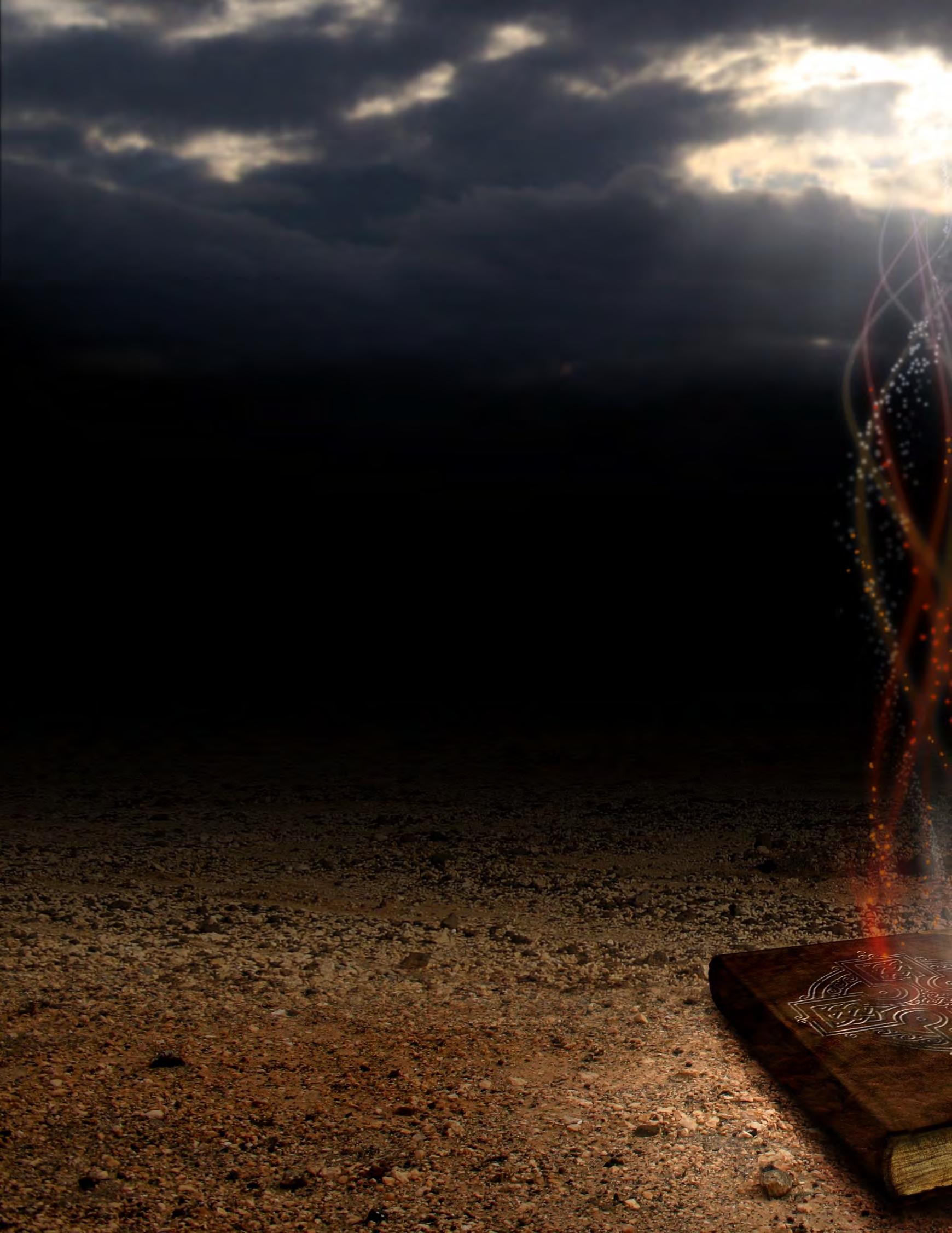

Lee Harris has been receiving communication from his guides, the Z’s, since 1999. He has made this wisdom available in a variety of ways, helping hundreds of thousands around the world, and now he offers these powerful messages in a one-of-a-kind and distinctly modern format. His channeling is presented in conversation with psychotherapist Dianna Edwards, who describes her work as “listening to hear.” Her questioning allows for a crystalclear exploration of Lee’s method and a beautifully accessible way of encountering and absorbing the wisdom transmitted from the Z’s.
Conversations with the Z’s offers practical information about the energetics of this new human soul and how to awaken your dimensional soul.

For more information, or to purchase the books, click the covers.



And ye shall know the truth, and the truth shall make you free.”
~John 8:32There have been millions of quotations written and spoken by brilliant minds, capturing wisdom about life and how we can best go about living it. For me, these words from Jesus would be at the very top of the list. In these thirteen words, he is offering a profound insight into ourselves and the great life available to us, though seldom lived by most. His words capture the design woven into our being from millions of years of evolution, through which we are able to resonate with truth and be free to live the great life–if only we’re willing to seek and know it. If only we were willing to seek the truth about what we really need to know about God, Ego, and ourselves. If only we’re willing to unlearn so much non-truth we have been taught and that we have taught ourselves, about each of these entities.
The Love, Life, and Energy–God Is would not want us to put the opportunity to know the great life on hold. It is here and available to us, if only we know where to look and how to seek it, guided by truth–our beacon to the great life.


